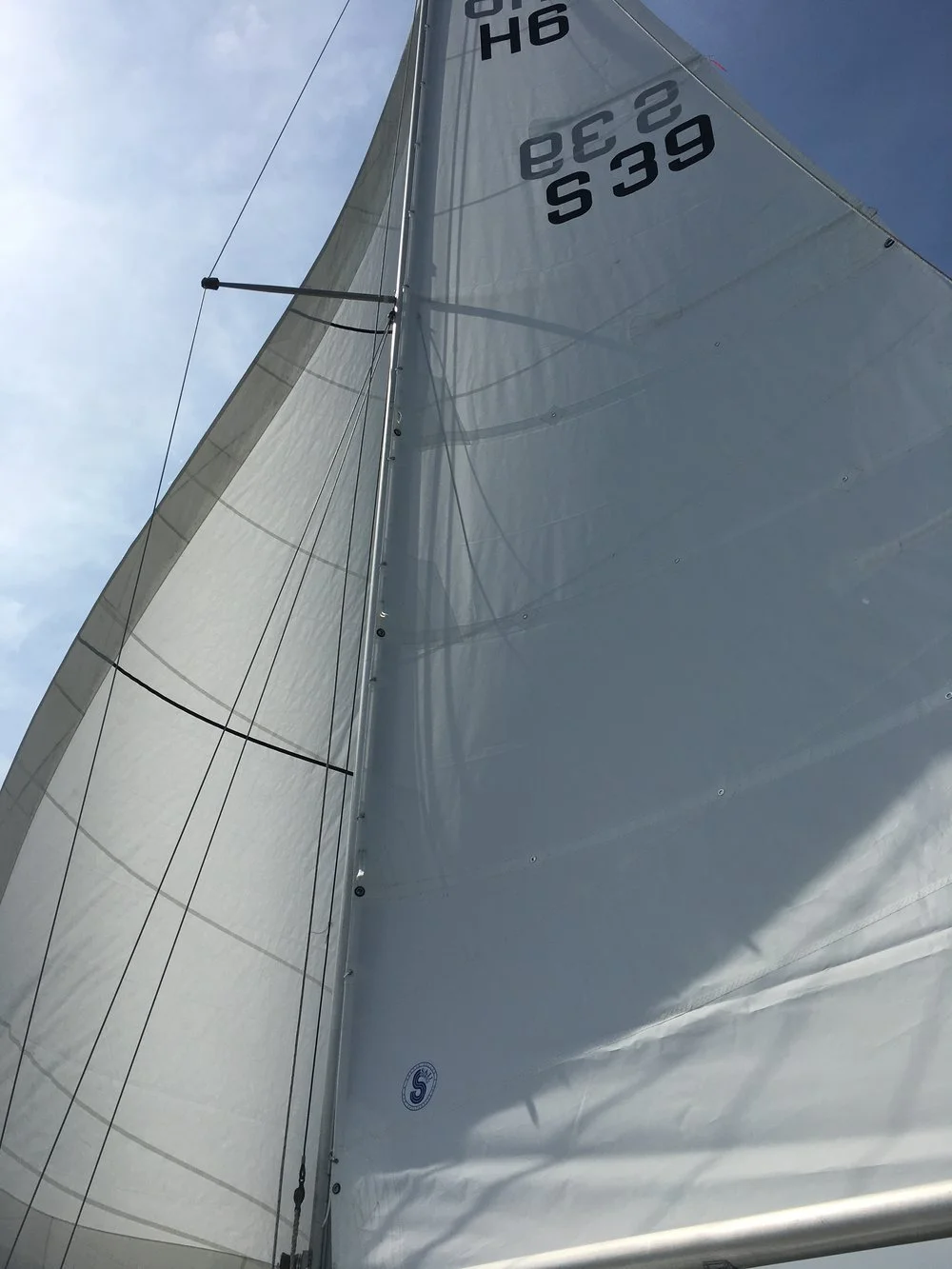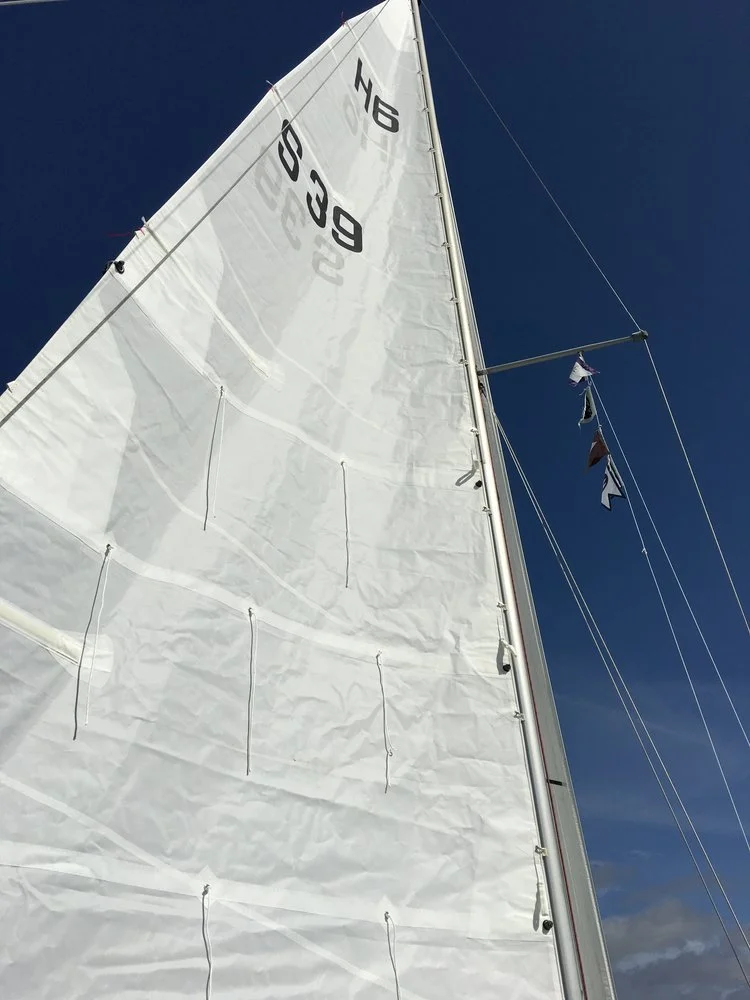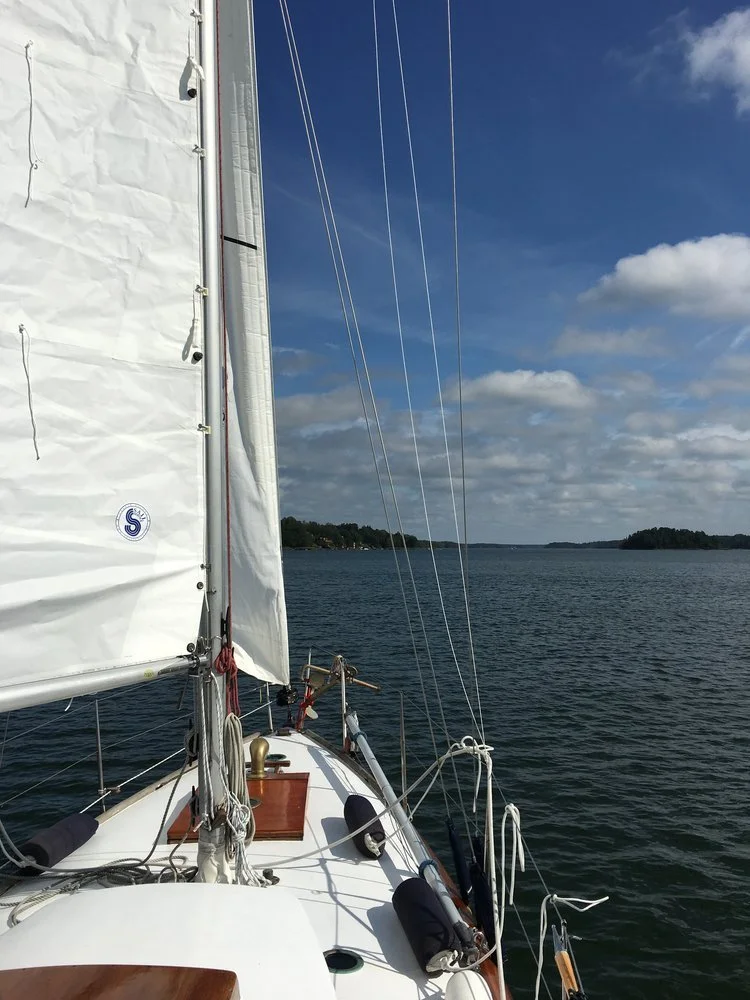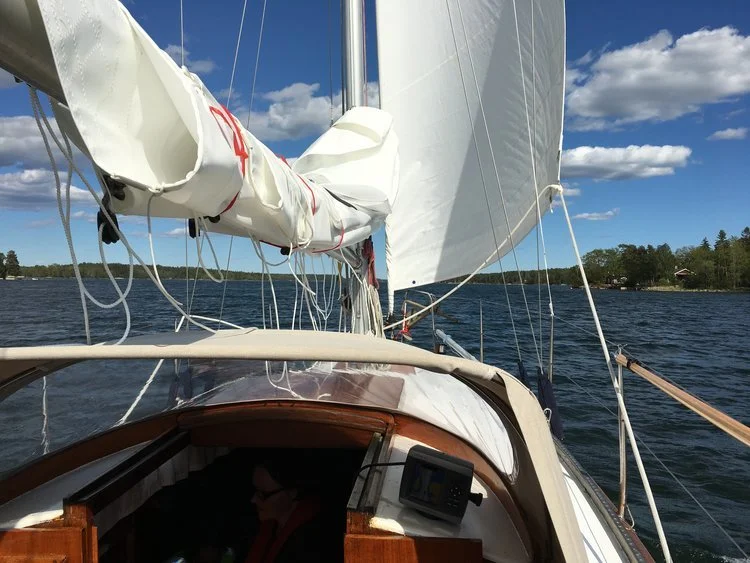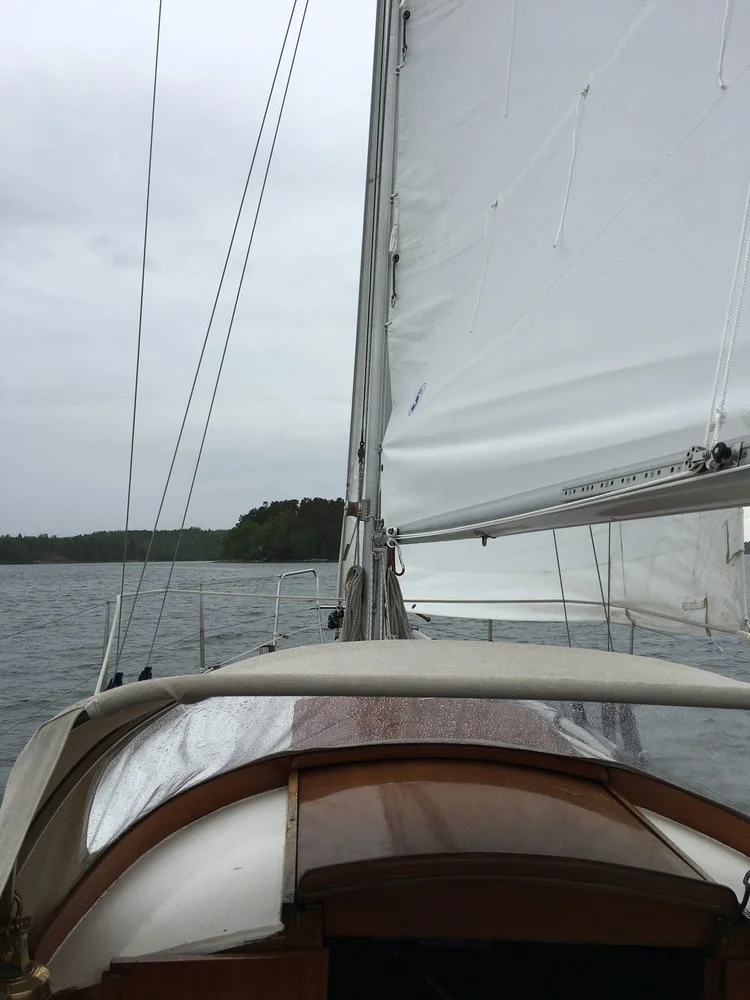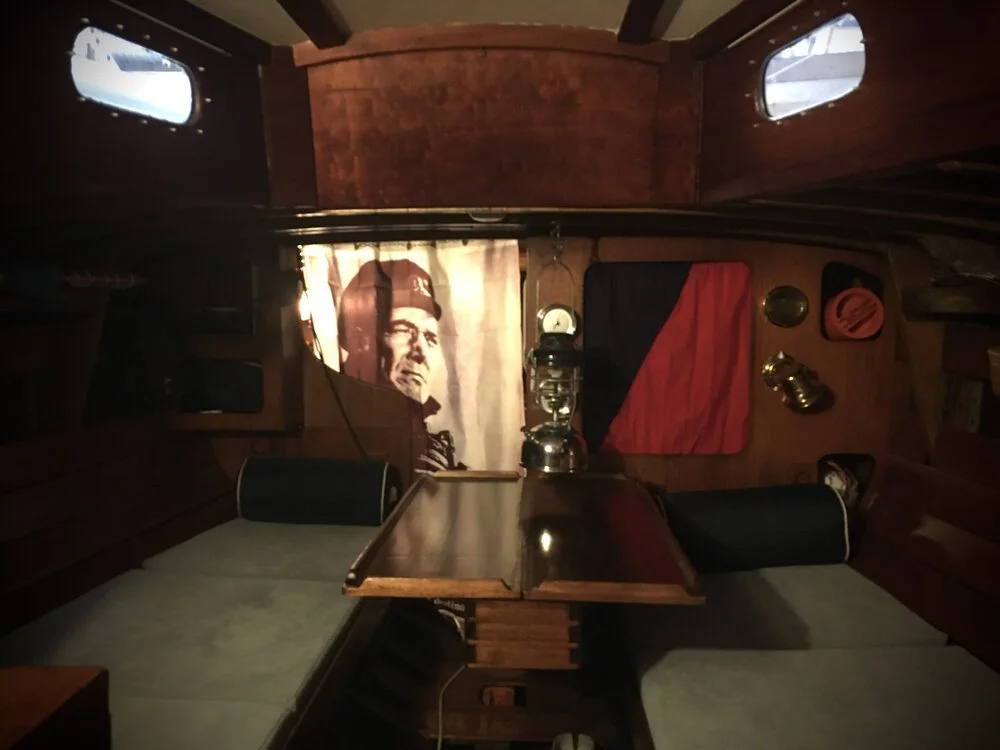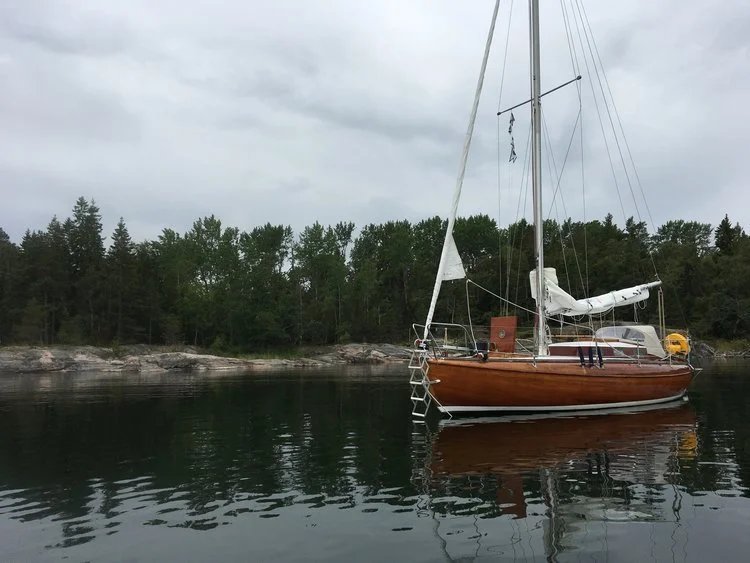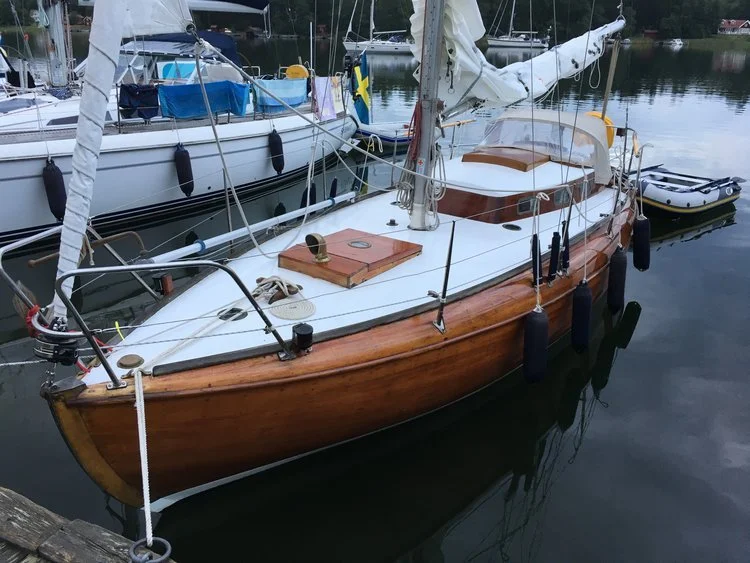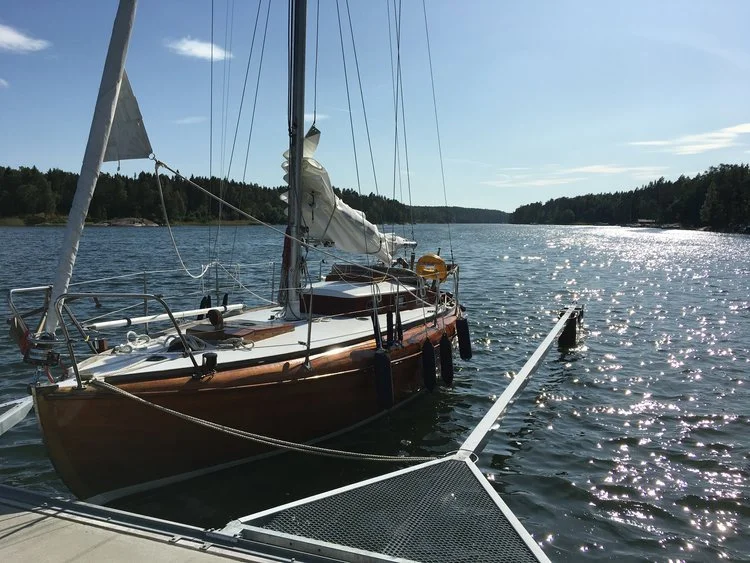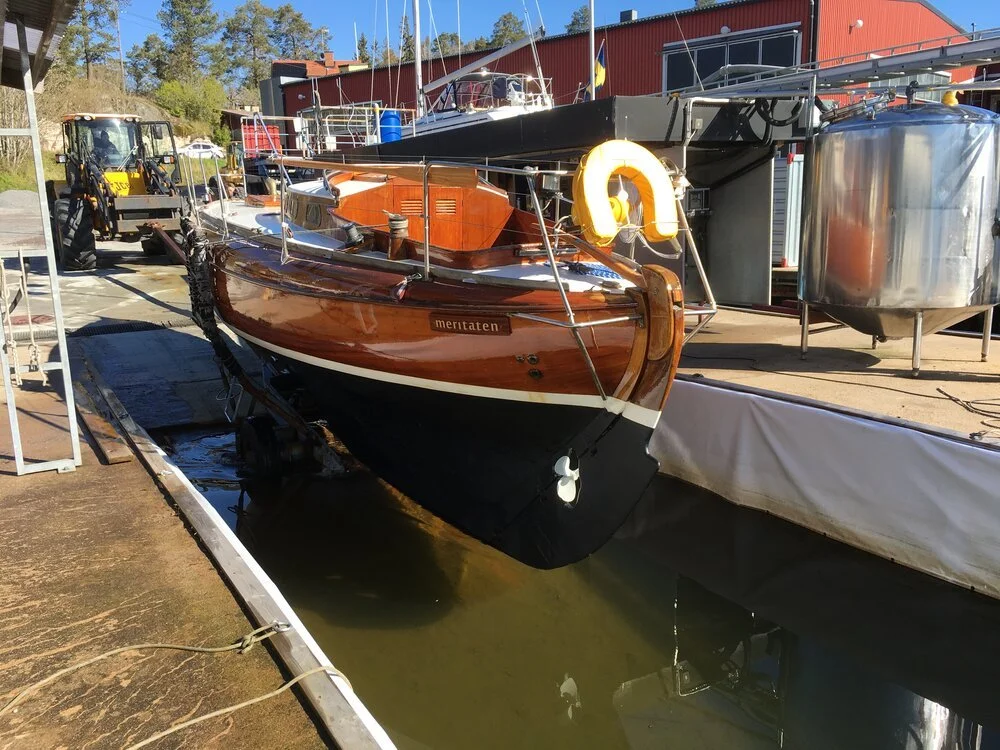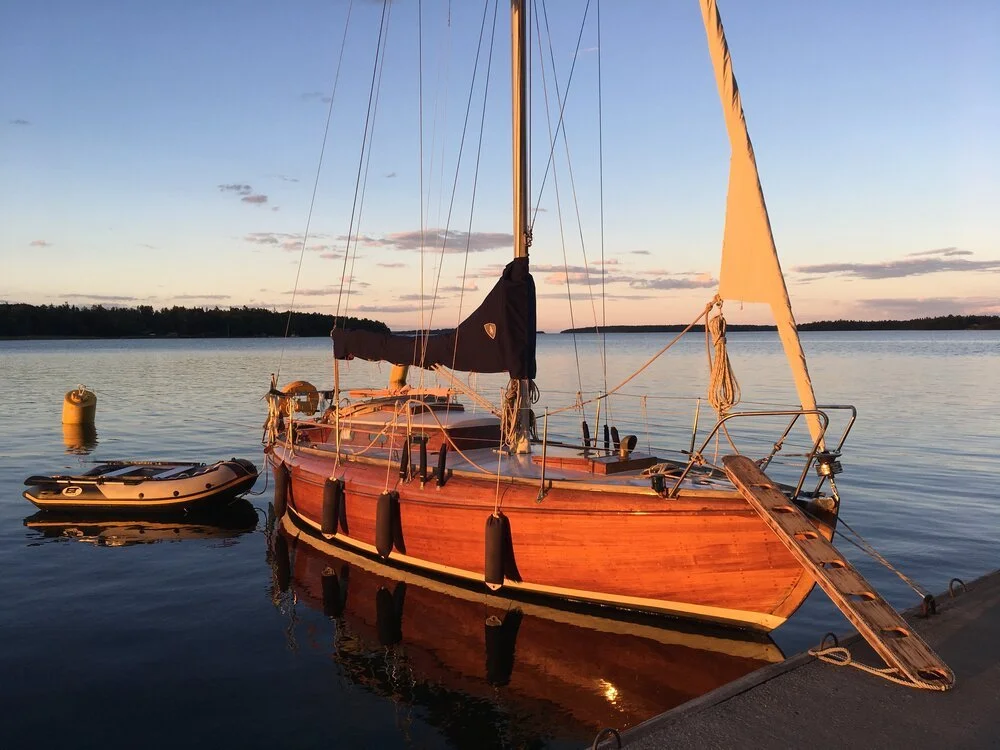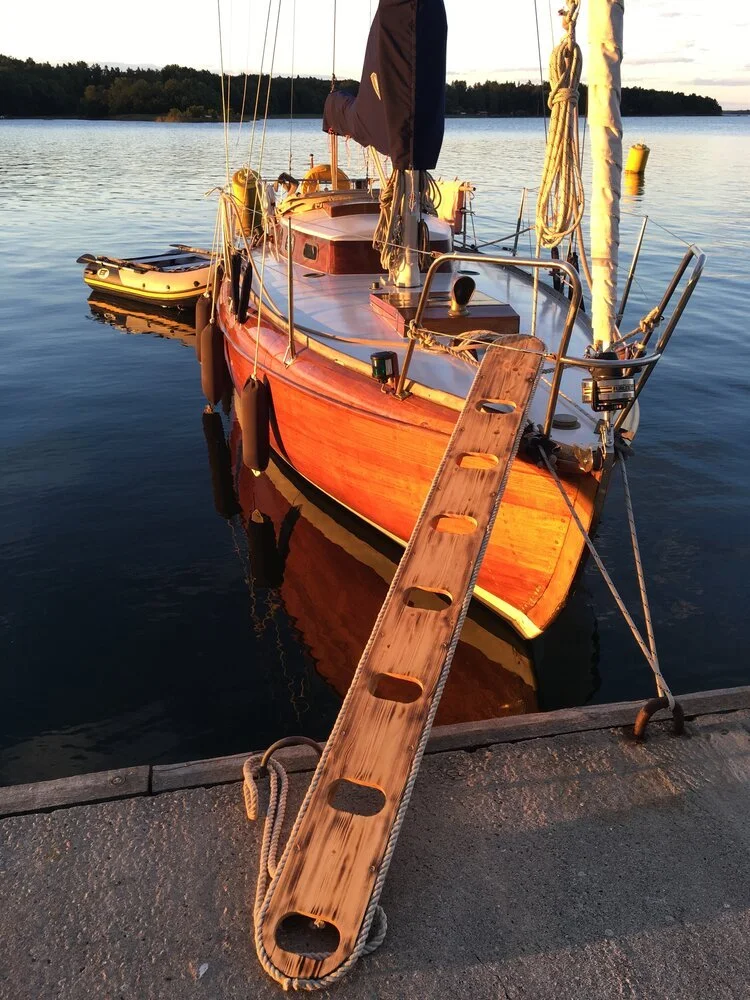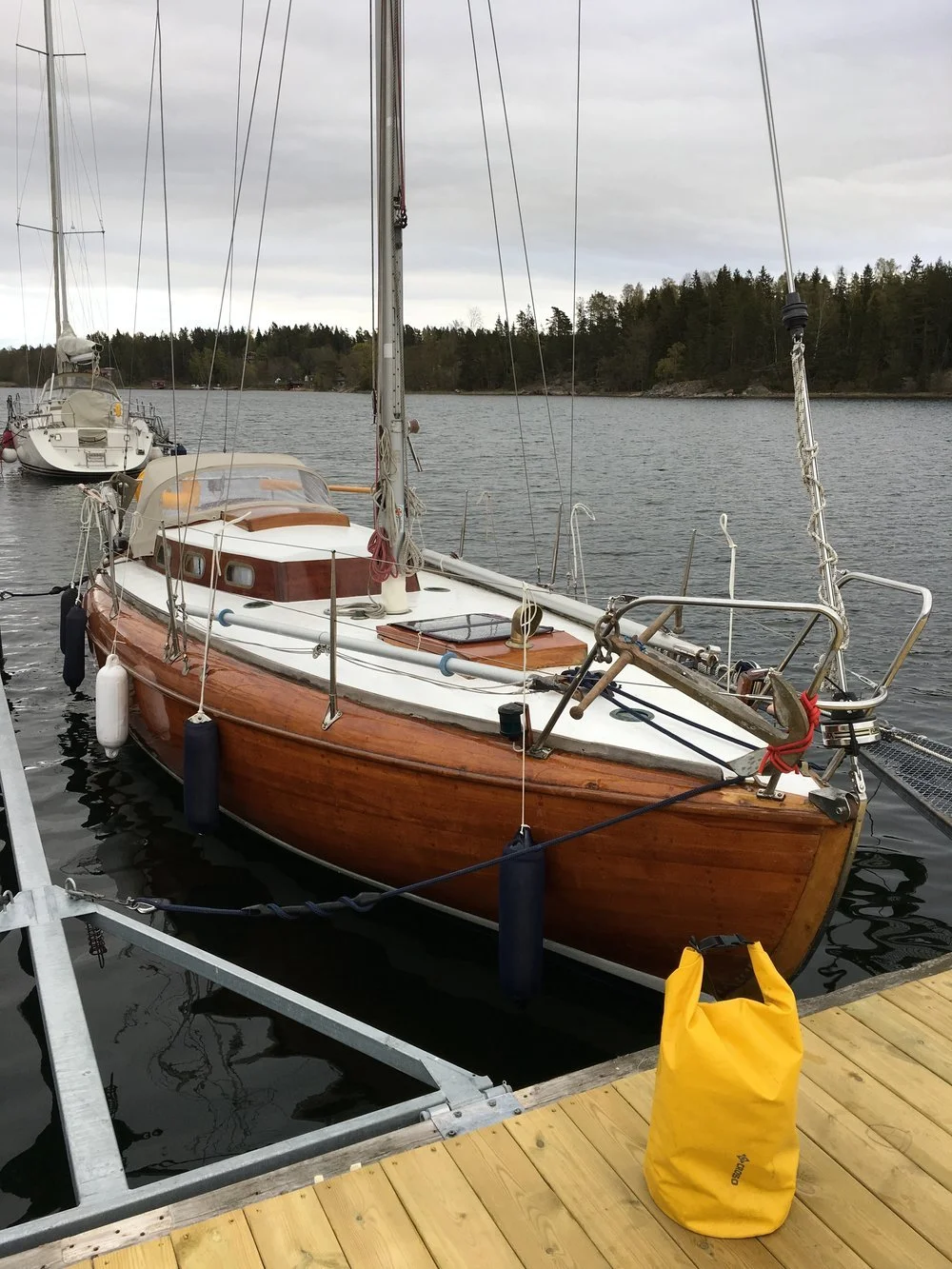Summary for potential Buyers
I am considering selling Meritaten. Not an easy decision but I will eventually need to chose between the new boat (Ilur) and her and since I cannot clone myself I will not have time for both ladies.
Already now, when I start building new boat, I see that work on a new boat happens to collide with work and sailing on Meritaten. And a boat which is not sailed does not feel good.
I’ve placed advertisement for Meritaten on Blocket and I already got several questions for more details and more pictures.
I realize that not all have patience to browse through my whole web page so I will try to gather pictures and facts about Laurinkoster Meritaten in this post.
Meritaten bears masthead rig, sloop. Aluminum mast and boom. Mainsail is new (Sailservice), genoa on roller. Both sails, of course, are Dakron.
Slab reefing with 3 lines on the mainsail. Boom can also be rolled for reefing.
I also have older sails, among others red spinnaker.
I was considering adding baby-stag so that I can run 2 foresails. She will then become cutter-rigged.
Main sail sheets are on new Liros classic rope with Tufnol blocks. I installed Barton rail system for improving sail trim, especially when beating against the wind. Transverse beam got reinforced and properly anchored to the structure so that sail force is distributed towards the main hull structure.
Rudder tiller is mahogany-oak composition (original) which I cleaned from damaged varnish, shaped and oiled with Owatrol. It is the only part of exterior which is oiled, all the rest is varnished. Works very well and maintenance is minimal.
Roller above the tiller houses yellow floating line, handy to retrieve MOB or for harbor maneuvers.
I bought drawings for building this boat, I write about them in this post.
Based on these drawings I sourced and installed heavy-duty Tufnol winches as they were originally. They are much handier to use when sailing alone - they are within arm reach while at the tiller.
Boom on Laurinkosters is dimensioned so that steersman at the tiller is beyond its reach. This is very convenient should you happen to make an uncontrolled gybe.
The engine is Yanmar 1GM diesel, very reliable and simple construction. It has installed fresh-water cooling.
I lifted the engine a few years ago, to renovate it and to get access to the hull structure below it.
I repaired all frames in this area and made a new cockpit structure. Engine beds were also renovated and reinforced. New anti-vibration cushions are installed, among other parts.
New cockpit sole forms big hatches above the engine room, secured in place and sealed while at sea. After lifting them one has easy and broad access to the engine and cooling system.
For standard engine maintenance it is enough to access the engine from the cabin. Oil filter, fuel filters and bleeding points can be accessed easily. I built new hatch with robust steps leading to the cabin. Sound and heat isolation behind them is also new.
Once in the cabin you will notice new, mahogany sole boards with brass ventilation holes for better air circulation in the bilge.
Each section can be lifted separately, wide finger-holes are also finished with brass.
Originally this boat could sleep 5 persons but it very rarely happens that more than 3 sail together. Hence I removed least comfortable and least used 2 places in the fore end (fo’c’sle) and rebuild the area for toilet and storage. Batteries also reside there, to counterbalance engine weight.
Three cabin bunks are: port, starboard and pilot-berth, each with each own, small cupboard for personal belongings.
I made new madrases for all berths. Each of them is consisting of 3 parts - that way they are easy to store during winter or dry/wash during the season. I used soft and stain-resistant material for the cover, semi-hard foam for internal stuffing so they don’t “bottom” when you put a knee on them. Very comfortable to sleep or sit on.
It is very cozy at night, at anchor. Picture below shows how it looked before I added internal ceiling - mahogany planks along berths. I added them later on, so that one can lean back on them for comfortable seating.
Without madrases the cabin looks like that:
Central part of the cabin is occupied by foldable table. Originally it was swinging on brass legs, allowing it to swing away but making it very unstable. I rebuild it so it hangs from the bulkhead, leaving more place for feet while seating. It is also much stable now.
The table can be folded when needed, leaving more room to move along the cabin towards fo’c’sle.
I was not happy with the old pentry so I rebuilt it and bought new Origo alcohol stove. It can be hanged on gimbals while in use so one can cook during sailing.
While in “creature comfort” topic - I installed chemical toilet in the fo’c’sle (it is forbidden to use traditional marine toilets in Sweden, at least in the Archipelago).
For sailing during cold weather I installed POD kerosene heater (lysfotogen) with new, copper radiators under the port berth. Circulation is done with new, silent electrical pump. The heater is hidden inside the bulkhead, with chimney emerging close to the mast - out of harms way.
Back on the deck. The boat has its original deck which is thick plywood on ash frames. I maintain it by painting with Hempel marine coat (1-component) white paint. Last time I did it was 2020 and so far it shows no signs of wear.
There are several portholes on the deck, providing more light to the cabin. They are made from heavy-duty, thick glass embedded in plywood. When I bought Meritaten they were finished just with white Sika. I thought it looks ugly so I made brass rings mounted on top of each one, as an additional protection and finish.
The hull is kept bright - varnished, as it was from the very beginning. As far as I know the freeboard was “wooded” (scraped to bare wood) only once in boat history and that was before I bought the boat.
There is absolutely no need to do this on this boat, unless one wants to stain the mahogany to darker color. I never considered that, the wood is beautiful in its current tone and is in its original thickness!
Spring maintenance for the hull is very simple:
key the surface with scotch-brite or other abrasive pad
clean the dust and degrease with Epifanes thinner
varnish
Every few years one can sand a bit more varnish, to inhibit too thick build-up. Sanding paper 180 or 240 is all what is needed. I did that last year so for the next few years it is not necessary. This way the wood maintains several coats of varnish but does not develop bubbles when the layer becomes too thick to detach from the surface.
As for hull integrity there are no jobs which would need to be done for many years. I fixed all what was needed for safe sailing:
repaired all broken frames: steam bent and one laminated. Laurinkosters are built according to the same principle as Colin Archers so every second thin, steam-bent frame there is a thick, laminated oak frame. There were a few broken steamed frames and one thick frame. I repaired them and built new floor timber (bottenstock)
3 keel bolts are replaced
there was one leak from the deck towards breasthook on the bow. I made a new breasthook and repaired the deck
Every winter the boat is soaked with linseed oil (raw) from the inside, to re-moisture the wood and maintain its elasticity.
That’s all to it, she is a joy to sail and I never felt unsafe, even in harsher conditions.
The boat sails firmly and easily single-handed


